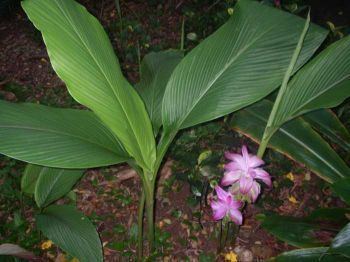Rank Species | Higher classification Hidden-lily | |
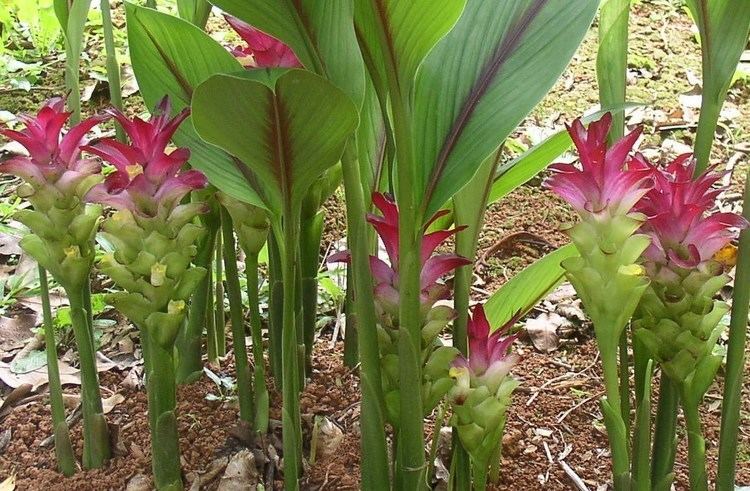 | ||
Similar Water, Turmeric, Fingerroot, Nut grass, Sugar | ||
Curcuma zedoaria
Curcuma zedoaria (zedoary, white turmeric, or kentjur) is a perennial herb and member of the genus Curcuma, family Zingiberaceae. The plant is native to India and Indonesia but now naturalized in other places including the US state of Florida. It was introduced to Europe by Arab traders around the sixth century, but its use as a spice in the West today is extremely rare, having been replaced by ginger, and to a lesser extent, yellow turmeric.
Contents

Characteristics
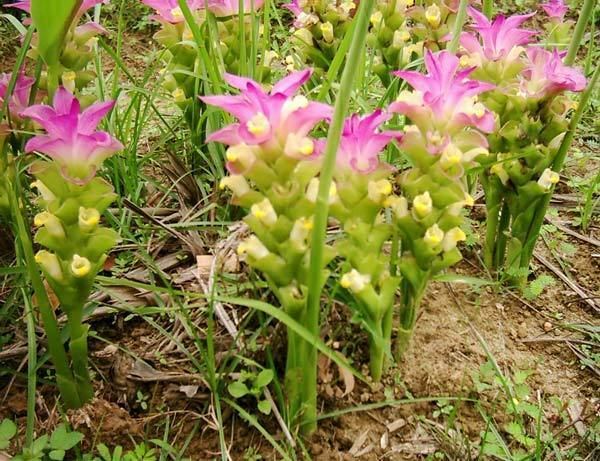
Zedoary grows in tropical and subtropical wet forest regions. The fragrant plant bears yellow flowers with red and green bracts and the underground stem section, a rhizome, is large and tuberous with numerous branches. The leaf shoots of the zedoary are large and can reach 1 meter (3 feet) in height.
Food
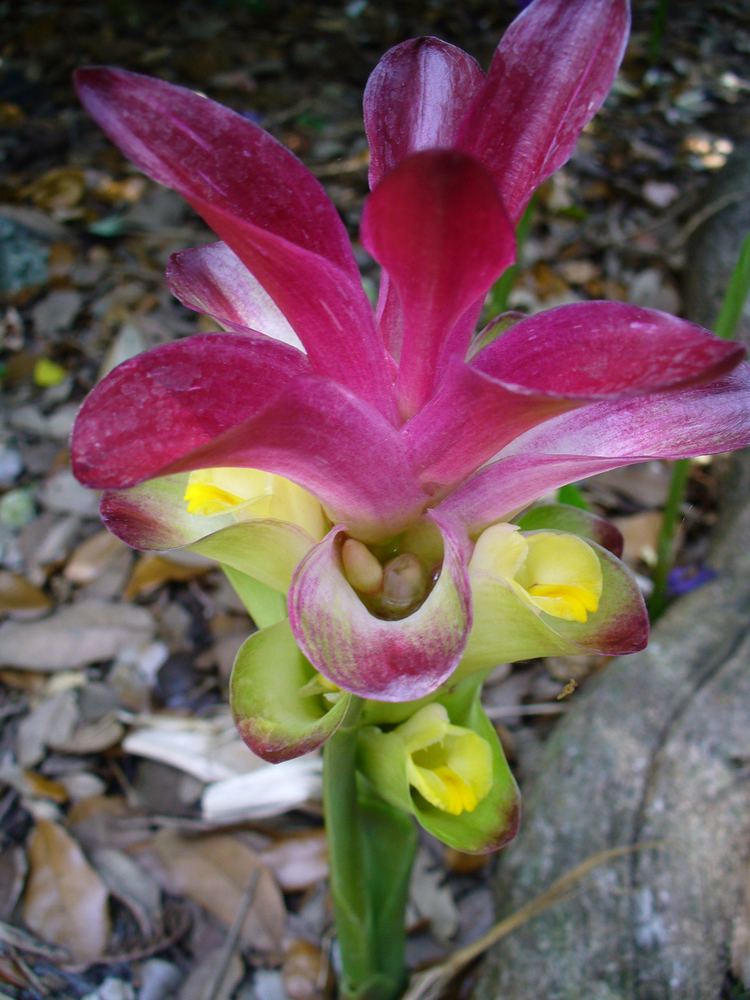
The edible root of zedoary has a white interior and a fragrance reminiscent of mango; however, its flavour is more similar to ginger, except with a very bitter aftertaste. In Indonesia, it is ground to a powder and added to make white curry pastes, whereas in India, it tends to be used fresh or in pickling. In Thai cuisine it is used raw and cut in thin strips in certain Thai salads. It can also be served cut into thin slices together with other herbs and vegetables with certain types of nam phrik (Thai chilli pastes).
Houseplant
The showy C. zedoaria is occasionally used as a houseplant.
In traditional medicine

The plant is used traditionally to treat inflammation, pain, and a variety of skin ailments including wounds, as well as menstrual irregularities and ulcers.
Others
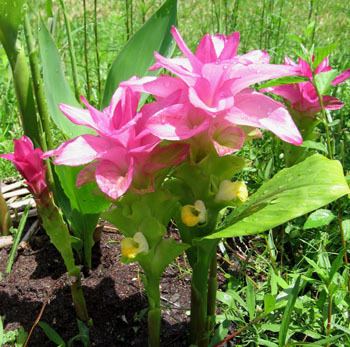
The essential oil produced from the dried roots of Curcuma zedoaria is used in perfumery and soap fabrication, as well as an ingredient in bitter tonics. The curcuminoid 1,7-bis(4-hydroxyphenyl)-1,4,6-heptatrien-3-one, and the sesquiterpenes procurcumenol and epiprocurcumenol can be found in C. zedoaria.

